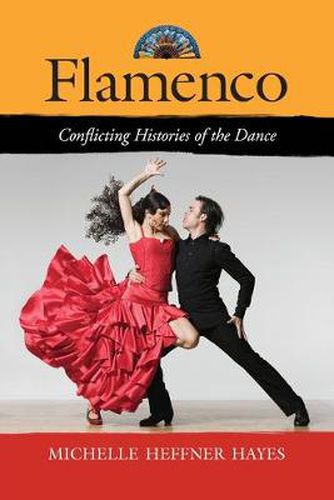Readings Newsletter
Become a Readings Member to make your shopping experience even easier.
Sign in or sign up for free!
You’re not far away from qualifying for FREE standard shipping within Australia
You’ve qualified for FREE standard shipping within Australia
The cart is loading…






This title is printed to order. This book may have been self-published. If so, we cannot guarantee the quality of the content. In the main most books will have gone through the editing process however some may not. We therefore suggest that you be aware of this before ordering this book. If in doubt check either the author or publisher’s details as we are unable to accept any returns unless they are faulty. Please contact us if you have any questions.
This analytical history traces representations of flamenco dance in Spain and abroad from the twentieth century through the present, using flamenco histories, film appearances of flamenco, accounts of live performances, and interviews with practitioners to map the emergence of a global dance practice. Focusing on the stereotype of the dancing body as the site of political and social tensions, it places that image in an international dialogue between tourists, flamenco purists, dictators, poets, filmmakers, and dancers. After laying the groundwork for an analysis of flamenco historiography, the text delves into such topics as images of the female flamenco dancer in films by Luis Bunuel, Carlos Saura, and Antonio Gades; the lasting stereotypes of flamenco bodies and Andalusian culture originated in Prosper Merimee’s novella Carmen; and, the ways in which contemporary flamenco dancers such as Belen Maya, Pastora Galvan, and Rocio Molina negotiate the flamenco stereotype of Carmen as well as the return of an idealized Spanish feminine that pervades ‘traditional’ flamenco. Informed by political and cultural theory as well as works in feminist and gender studies, this ambitious study illuminates the conflicting stories that compose the history of flamenco.
$9.00 standard shipping within Australia
FREE standard shipping within Australia for orders over $100.00
Express & International shipping calculated at checkout
This title is printed to order. This book may have been self-published. If so, we cannot guarantee the quality of the content. In the main most books will have gone through the editing process however some may not. We therefore suggest that you be aware of this before ordering this book. If in doubt check either the author or publisher’s details as we are unable to accept any returns unless they are faulty. Please contact us if you have any questions.
This analytical history traces representations of flamenco dance in Spain and abroad from the twentieth century through the present, using flamenco histories, film appearances of flamenco, accounts of live performances, and interviews with practitioners to map the emergence of a global dance practice. Focusing on the stereotype of the dancing body as the site of political and social tensions, it places that image in an international dialogue between tourists, flamenco purists, dictators, poets, filmmakers, and dancers. After laying the groundwork for an analysis of flamenco historiography, the text delves into such topics as images of the female flamenco dancer in films by Luis Bunuel, Carlos Saura, and Antonio Gades; the lasting stereotypes of flamenco bodies and Andalusian culture originated in Prosper Merimee’s novella Carmen; and, the ways in which contemporary flamenco dancers such as Belen Maya, Pastora Galvan, and Rocio Molina negotiate the flamenco stereotype of Carmen as well as the return of an idealized Spanish feminine that pervades ‘traditional’ flamenco. Informed by political and cultural theory as well as works in feminist and gender studies, this ambitious study illuminates the conflicting stories that compose the history of flamenco.